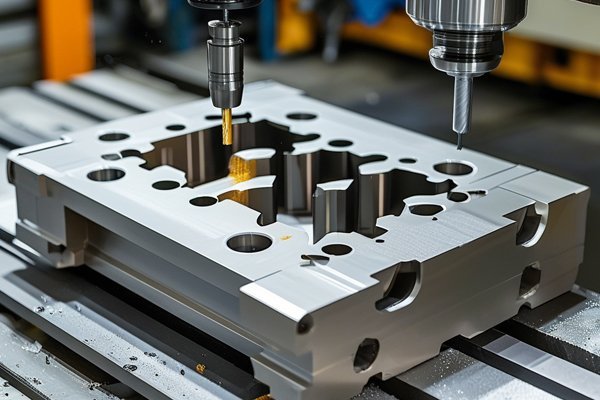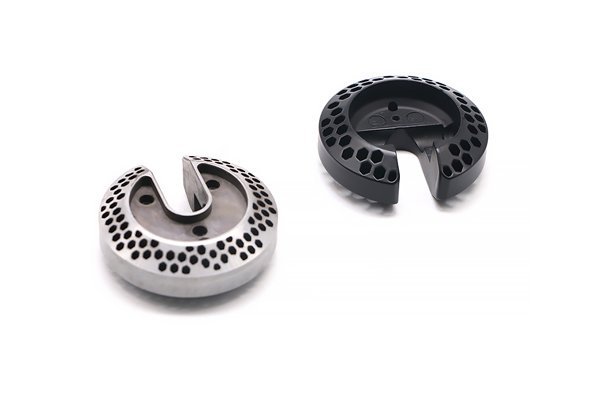: The CNC Machining Landscape
Did you know that the global CNC machining market size was valued at approximately $70.67 billion in 2020 and is expected to grow due to the increasing demand for precision engineering in industries like aerospace, automotive, and healthcare? In such a booming industry, CNC machining plants face intense competition, not just locally but on a global scale. With rising demand and rapid technological advancements, it is imperative for CNC machining plants to maintain competitiveness and attract new customers.
This blog will delve into effective strategies for CNC machining plants to stand out in a crowded marketplace. We’ll explore several methods, from embracing advanced technologies to enhancing customer relationships, which can propel a machining plant ahead of rivals.
Chapter 1: Understanding the Market Landscape
1.1 Analyzing the Competitive Landscape
To thrive in CNC machining, first understanding the competitive landscape is essential. Performing a SWOT (Strengths, Weaknesses, Opportunities, Threats) analysis can reveal critical insights about internal capabilities and external opportunities. Identify key competitors and assess their strengths and weaknesses. Tools like Porter’s Five Forces can help evaluate how various forces within the industry impact competitiveness.
1.2 Segmenting Target Markets
Recognizing and segmenting target markets based on industries, size, and needs allows CNC machining plants to tailor services and retain customers. For instance, aerospace clients often prioritize quality and precision, while automotive firms may focus on cost-efficiency. By understanding market segmentation, a CNC plant can better align its offerings.
Chapter 2: Investing in Advanced Technologies
2.1 Embracing Industry 4.0
The shift toward Industry 4.0 is revolutionizing manufacturing processes. CNC machining plants that integrate smart manufacturing techniques—such as IoT, artificial intelligence, and big data—can optimize operations, improve efficiency, and reduce downtime.
2.2 Automation and Robotics
By embracing automation and robotic systems, CNC machining plants can enhance productivity and reduce human error. Investing in advanced CNC machines that feature automated tools, loaders, and unloaders can streamline production processes, thus allowing the plant to take on more jobs and increase customer satisfaction.
2.3 Upgrading Software Solutions
Modern CNC machines should be paired with advanced software solutions for CAD (Computer-Aided Design) and CAM (Computer-Aided Manufacturing). These upgrades help improve design accuracy, minimize waste, and optimize machining operations.
Chapter 3: Quality Assurance and Continuous Improvement
3.1 Implementing Quality Control Measures
Quality assurance is paramount for attracting and maintaining customers. Incorporating a robust quality management system (QMS) ensures that every product meets the highest standards. This may involve regular inspections, testing procedures, and compliance with international standards such as ISO
3.2 Fostering a Culture of Continuous Improvement
Utilizing methods like Lean Manufacturing and Six Sigma helps minimize waste and improve efficiency. Institutions that encourage employees to identify areas for improvement can foster a culture of innovation, ultimately enhancing service quality.
Chapter 4: Building Strong Customer Relationships
4.1 Effective Communication
Establishing open channels of communication with clients builds trust and fosters long-term relationships. Invest in customer relationship management (CRM) systems to ensure consistent and effective communication throughout the customer journey.
4.2 Providing Exceptional Customer Service
Outstanding customer service is a definite way to retain clients. Implementing a dedicated customer service team that quickly addresses inquiries or issues helps strengthen bonds with clients.
4.3 Value-Added Services
Offering complementary services can help CNC machining plants differentiate themselves. For instance, skills like assembly, kitting, finishing, and logistics can enhance a customer’s buying experience.

Chapter 5: Marketing and Building a Digital Presence
5.1 Optimizing for SEO
To attract more customers, CNC machining plants need an effective digital marketing strategy. Utilizing SEO (Search Engine Optimization) techniques ensures potential clients can find the business easily online. This can involve optimizing the website with relevant keywords, creating quality content, and ensuring quick loading speeds.
5.2 Leveraging Social Media
Platforms such as LinkedIn, Facebook, and Instagram enable CNC machining plants to engage with customers directly, showcase their work, and gather feedback. Sharing success stories, prototypes, and testimonial videos can enhance visibility.
5.3 Content Marketing
Publishing blogs, whitepapers, and infographics not only positions the machining company as an industry thought leader but also educates potential customers about the benefits of CNC machining services.
Chapter 6: Strategic Partnerships and Collaborations
6.1 Networking within the Industry
Forming strategic alliances with suppliers, industry associations, and educational institutions can enhance a CNC plant’s capabilities. Partnerships might also lead to shared resources, technology exchanges, or joint projects that open new avenues for business growth.
6.2 Participating in Trade Shows and Expos
Engaging in trade shows and expos can expand a brand’s visibility, allowing the business to network, demonstrate products, and meet potential clients.
Chapter 7: Sustainability and Ethical Practices
7.1 Implementing Sustainable Practices
Modern customers are increasingly considering sustainability. Adopting eco-friendly processes—such as minimizing waste and using recyclable materials—can attract environmentally conscious clients.
7.2 Ethical Manufacturing
Ensuring ethical manufacturing practices resonates well with customers who prioritize conscientious suppliers. Developing transparent sourcing policies and labor practices builds brand reliability while enhancing corporate responsibility.
Chapter 8: Training and Employee Development
8.1 Investing in Employee Training
To maintain a competitive edge, CNC machining plants need to invest in continuous training and development. Upskilling employees with the latest tools, technologies, and manufacturing techniques boosts productivity and reduces skill gaps.
8.2 Fostering an Engaged Workforce
A motivated workforce can drive innovation. Encouraging employees to suggest improvements, participate in decision-making, and pursue professional development opportunities creates an engaged environment.
: The Key to Competitiveness
CNC machining plants must harness a diverse range of strategies to maintain competitiveness and attract customers in a rapidly changing industry. From adopting the latest technologies and ensuring exceptional quality to nurturing customer relationships and sustainable practices, every element plays a crucial role in positioning a business favorably within the market.
Why is this blog important? As the CNC machining landscape evolves, embracing these techniques and strategies is not merely a recommendation; it is a necessity. The success of CNC machining plants hinges on their ability to adapt, innovate, and serve their customers effectively. In a world driven by speed, quality, and sustainability, staying ahead of the curve will determine future growth and customer loyalty.
In essence, installing a philosophy of continuous improvement and embracing change will help CNC machining plants not only survive but thrive in an increasingly competitive marketplace. By investing in advanced technologies, fostering strong relationships, and committing to quality, your CNC machining plant can secure a prosperous future.






